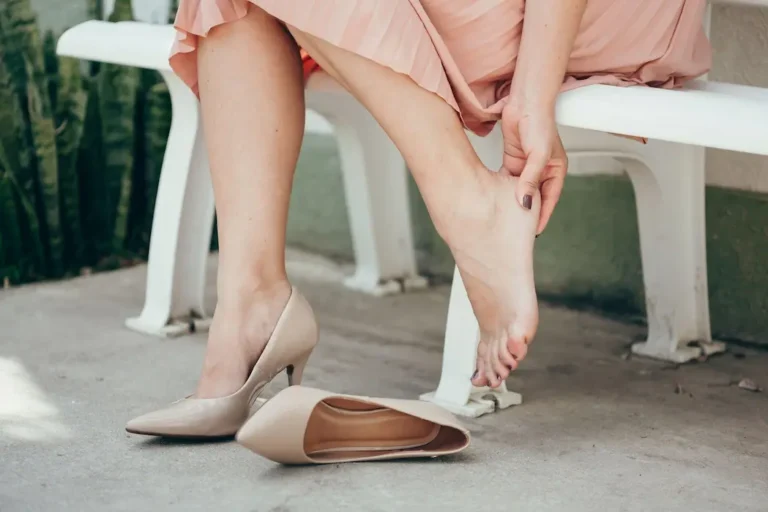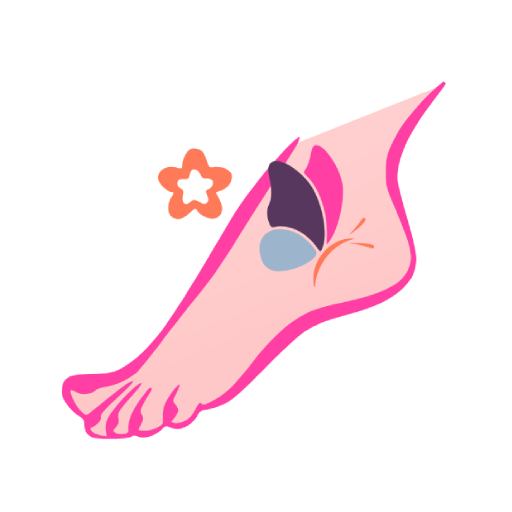Flat feet, or fallen arches, occur when the arches of your feet collapse, causing the entire sole to contact the ground. This condition is more common than you might think, affecting approximately 25% of the population. Causes can vary from genetics to injury, but understanding your specific flat feet type is crucial for choosing the right running shoes. Let’s suggest best running shoes for flat your flat feet.
Why Proper Running Shoes Matter
Running with flat feet without adequate support can lead to discomfort, pain, and potential injuries. Proper running shoes for flat feet can provide the necessary arch support and cushioning to mitigate these issues, ensuring a more enjoyable and safe running experience. We’ll also recommend the top five running shoe models for flat feet, offer fitting tips, and provide exercises to strengthen and stretch your feet.
How to Identify Your Flat Feet Type
Before diving into the best running shoe options, let’s determine your flat feet type. This step is essential because it helps you understand your specific arch and pronation needs, guiding your shoe selection.
Low Arches vs. No Arches
Flat feet come in two primary variations: low arches and no arches. Low arches still have some degree of curvature, while no arches are entirely flat. Identifying your arch type will influence the level of support and cushioning your running shoes should provide.
Pronation Patterns
Pronation refers to the inward rolling of the foot during each step. Different individuals exhibit various pronation patterns, which can affect how your feet strike the ground. The three main pronation patterns are:
- Overpronation: The foot rolls excessively inward.
- Neutral Pronation: The foot rolls slightly inward, maintaining a balanced stride.
- Underpronation (Supination): The foot doesn’t move inward enough, leading to more pressure on the outer edge.
Understanding your pronation pattern is crucial when choosing running shoes, as it determines the level of motion control and stability you need.
Features to Look for in Running Shoes
Now that you’ve identified your flat feet type, let’s explore the essential features to consider when selecting the best running shoes.
Best running shoes for flat feet women
Unleash your potential with the best running shoes for men with flat feet. Experience unmatched comfort and support for your runs like never before.

Arch Support
Running shoes for flat feet should offer excellent arch support to help maintain proper alignment. Look for shoes with built-in arch structures or the ability to accommodate orthotic inserts.
Motion Control
For overpronators, motion control is critical. These shoes have features like dual-density midsoles and firmer materials on the medial (inner) side to reduce excessive inward rolling.
Cushioning
Cushioning is vital to absorb the shock of each step, providing comfort and preventing injury. Ensure your chosen shoes have ample cushioning, especially in the heel and forefoot areas.
Breathability
Proper airflow is essential to prevent discomfort and blisters during your runs.
Traction
Running on various surfaces requires good traction. Look for shoes with durable rubber outsoles designed to provide grip on both roads and trails.
Tips for Proper Shoe Fitting
Choosing the right size and fit is crucial when selecting running shoes for flat feet. Follow these steps to ensure your shoes provide maximum comfort and support:
Measuring Your Feet
Use a Brannock device or a foot measuring tool to measure your feet’s length and width accurately.
Trying on Shoes
1.Try on shoes in the late afternoon or evening when your feet are slightly more significant due to natural swelling.
2.Wear the same type of socks you’ll use for running to get a more accurate fit.
3.Test the fit by wiggling your toes and ensuring enough space at the front (about a thumb’s width).
4.Walk or jog around the store to evaluate comfort and support.
Common Mistakes to Avoid
When searching for the perfect running shoes, it’s essential to avoid these common pitfalls.
Best running shoes for flat feet😊https://t.co/6opKzCo22X#shoes #runningshoes #fastrunning #shoeslovers #shoesaddict #shosecare #shoesformen #shoesfor-women pic.twitter.com/NnPM9hIZYj
— Sellfeetpics (@sellfeetpicsco) September 22, 2023
Neglecting Arch Support
One of the biggest mistakes individuals with flat feet make is choosing shoes without proper arch support. Insufficient support can lead to discomfort and exacerbate overpronation.
Best Running Shoes for Women with Flat Feet
If you’re a woman with flat feet, you understand the importance of finding the right running shoes. Flat feet, also known as fallen arches, can lead to discomfort and pain if not properly supported during physical activities. In this guide, we’ll walk you through the world of running shoes designed to cater specifically to the needs of women with flat feet.
Importance of Proper Footwear
Before we delve into the specifics of running shoes, let’s take a moment to understand why proper footwear is crucial for individuals with flat feet. Flat feet, characterized by the lack of a natural arch, can result in overpronation, where the foot rolls inward excessively while running. This can lead to various issues, including shin splints, knee pain, and plantar fasciitis.
What Are Flat Feet?
Flat feet are a common condition where the arches of the feet are either very low or completely absent. This can be hereditary or developed over time due to factors like age, injury, or excessive wear and tear.
Identifying Common Symptoms
- Foot pain, especially around the arch or heel.
- Fatigue and discomfort during physical activities.
- Overpronation, which can cause instability.
- Lower back and leg pain due to improper alignment.
The Impact of Improper Footwear
Running in shoes that don’t provide adequate support can exacerbate the issues associated with flat feet. It can lead to injuries, decreased endurance, and hindered performance.
Best running shoes for flat feet😊https://t.co/6opKzCo22X#shoes #runningshoes #fastrunning #shoeslovers #shoesaddict #shosecare #shoesformen #shoesfor-women pic.twitter.com/NnPM9hIZYj
— Sellfeetpics (@sellfeetpicsco) September 22, 2023
Choosing Style Over Function
While style is important, prioritize functionality when selecting running shoes. Ensure they meet your flat feet’s specific needs, even if they need the trendiest design.

Orthotic Inserts and Custom Insoles
In some cases, orthotic inserts or custom insoles may be necessary to provide additional arch support and enhance the comfort of your running shoes. Consult with a podiatrist or orthopedic specialist to determine if orthotics are right for you and to ensure you choose the appropriate type.
Benefits of Proper Footwear
Investing in the right running shoes for flat feet offers numerous benefits, including:
- Enhanced Comfort
Running in shoes that provide adequate arch support and cushioning can significantly increase comfort and reduce the risk of discomfort or pain during and after your runs.
- Injury Prevention
Proper running shoes can help prevent injuries by promoting proper alignment and reducing the strain on your feet, ankles, and knees.
Real-Life Success Stories
Hearing from individuals who have experienced positive outcomes can be encouraging and informative. Here are a few testimonials from runners with flat feet who have benefited.
Conclusion
In conclusion, running with flat feet is entirely possible and enjoyable when you invest in the right pair of shoes. Prioritize arch support, motion control, and cushioning to ensure a comfortable and injury-free running experience. Remember to follow our fitting tips and consider incorporating foot-strengthening exercises and stretches into your routine.
By choosing the best running shoes for flat feet and caring for your feet, you can continue to pursue your passion for running confidently.
FAQs
How do I know if I have flat feet?
Flat feet are characterized by a lack of arches in the feet, causing the entire sole to make contact with the ground. You can perform a simple wet footprint test to determine your arch type. You likely have flat feet if your footprint shows nearly the entire sole.
Can I run with flat feet?
Absolutely! Running with flat feet is possible and enjoyable with the right running shoes that provide proper arch support and cushioning.
What is overpronation?
Overpronation is a common issue among individuals with flat feet. It refers to the excessive inward rolling of the foot during each step. It can lead to various foot and leg problems if not properly addressed.
Are there specific socks for flat feet?
While no specific socks are designed exclusively for flat feet, choosing moisture-wicking, cushioned socks can enhance comfort and reduce the risk of blisters and discomfort during runs.
How often should I replace my running shoes?
The lifespan of running shoes varies depending on factors like mileage, running terrain, and shoe quality.








